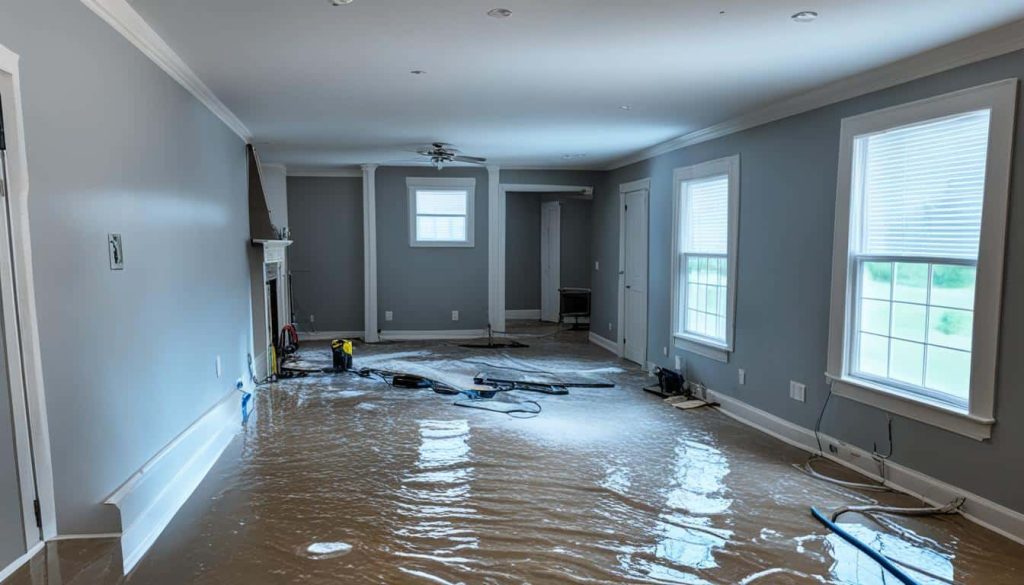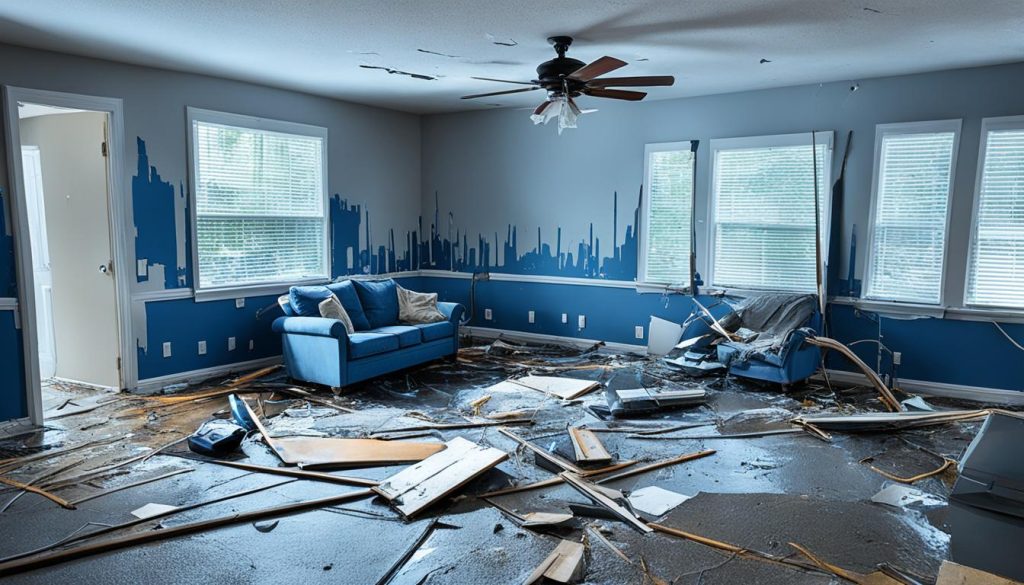What to do after flood or water damage in your property? Imagine returning from a relaxing vacation only to find your home submerged under three inches of water. It’s a distressing scenario, and your immediate response can make a significant difference in the outcome. While your first call should be to your insurance agent, there are crucial steps to take next to protect your property and health. This guide outlines essential actions to take and highlights the importance of working with certified professionals.
Array of Solutions, a trusted name in mold removal in Greenville South Carolina since 2007, stands ready to tackle your mold woes. With our expert mold inspection Greenville services and EPA-Registered credentials, we’re equipped to detect, remove, and prevent mold growth in your home or business.
Table of Contents
What to Do After Flood: Essential Steps and Precautions
1. Ensure Safety First
Before you wade into the floodwaters, prioritize safety. Floodwater can contain contaminants and pose serious health risks. If possible, turn off electricity at the main breaker to prevent electrical hazards. Avoid touching electrical appliances or outlets if the water is still present. Wear protective gear, such as rubber boots and gloves, to minimize exposure to harmful substances.
2. Stop the Source of Water
If the flood resulted from a burst pipe or appliance leak, locate and turn off the water supply to your home. The main water valve is typically found in the basement or near the water meter. If you’re unsure where it is, consult your home’s plumbing plan or contact a plumber for assistance. Stopping the water flow will prevent further damage and simplify the restoration process.
3. Document the Damage
Before beginning any cleanup efforts, thoroughly document the damage for insurance purposes. Take photos or videos of affected areas, including walls, floors, and personal belongings. This documentation will support your insurance claim and help ensure you receive appropriate compensation for repairs and replacements.
4. Contact Your Insurance Company
Notify your insurance company immediately to report the damage. Provide them with the documentation you’ve gathered and discuss the next steps for filing a claim. Insurance policies often have specific requirements for reporting and documenting damage, so follow their instructions carefully to expedite the process.
5. Hire a Certified Water Damage Restoration Professional
One of the most critical decisions you’ll make after a flood is choosing a water damage restoration professional. Look for a contractor certified by the Institute of Inspection, Cleaning, and Restoration Certification (IICRC). The IICRC sets high standards and guidelines for water damage restoration, ensuring that certified professionals adhere to best practices and industry standards.

What is the IICRC?
The IICRC, or Institute of Inspection, Cleaning, and Restoration Certification, is a recognized organization dedicated to promoting high standards and ethics in the restoration industry. They establish key industry standards and reference guides for water damage restoration, mold remediation, and more. Hiring an IICRC-certified professional ensures that your restoration is conducted according to these rigorous standards, protecting both your property and health.

6. Avoid Common Pitfalls
Be cautious when selecting a contractor. Non-certified professionals may not fully understand the different categories of water damage and their specific restoration requirements. For example, water damage is categorized into three levels:
- Category 1: Clean water from a broken pipe or appliance.
- Category 2: Gray water from sources like a leaky washing machine, which may contain contaminants.
- Category 3: Black water from sewage or flooding, which poses severe health risks.
Improper handling of Category 2 or Category 3 water can lead to health hazards and further property damage. Certified professionals are trained to handle these situations safely, using the appropriate techniques and equipment.
7. Address Mold and Mildew
Once the immediate water damage has been addressed, monitor for signs of mold and mildew growth. Mold can begin to develop within 24-48 hours of water exposure. If you notice any signs of mold, such as musty odors or visible mold growth, contact a mold remediation specialist to address the issue promptly. Mold not only causes structural damage but also poses health risks, particularly to those with respiratory issues or allergies.
8. Prevent Future Flooding
After the immediate damage has been addressed, take steps to prevent future flooding. Ensure that gutters and downspouts are clear and functioning properly. Consider installing a sump pump in your basement or crawl space to manage excess water. Additionally, evaluate your landscaping to ensure proper grading and drainage away from your home.

